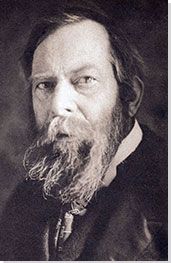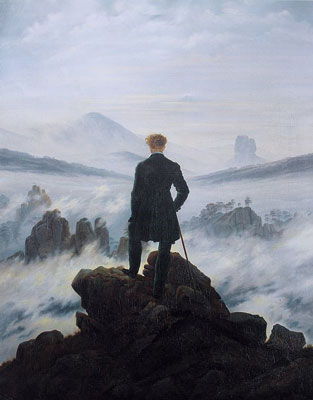Summary of Albert Pinkham Ryder
Albert Pinkham Ryder was the only American painter whose work was hung in the same gallery as the honoured European masters of the modern, Cézanne, van Gogh, Gauguin, Manet, at the landmark 1913 Armory Show in New York, the exhibition that virtually defined modern in art and introduced the term avant-garde into the way we talk about art. Yet Ryder's approach to his own work was deeply personal, inventive, idiosyncratic, obsessive, and disregarding of "isms." As an intuitive extender of American Romanticism's reach, Ryder's interest in form and tone as means to evoke feelings and moods drew him towards abstract fields of dense but muted color. His paintings are always pictures of something but their abstract qualities also deeply appealed to the modernist interest in surface and the non-pictorial. For Ryder himself, the paintings of eerie light flooding scenes of other-worldly strangeness were vehicles for transporting himself and the viewer to somewhere beyond everyday rationality. Today many of Ryder's canvases and panels have deteriorated and the gradual sinking of his illuminating vision back into literal obscurity is one of the great ironies of modern art.
Accomplishments
- One of Ryder's most notable artistic heirs, American abstract painter Bill Jensen, has said of his own work that it seeks to "put people in touch with areas of their psyche they're not normally aware of. ... If you can bring people in touch with that for just a second, then you have a different way of looking at the world." This perfectly captures Ryder's influence on many artists, including Marsden Hartley, Georgia O'Keeffe, and Jackson Pollock, who saw the importance of Ryder's different way of looking at the world and were deeply affected by it.
- Ryder's characteristic method was to empty out unnecessary detail from the spaces he was painting and replace them with layers of moody light and color that tended towards abstractionism, but he never abandoned the representational. So, Ryder's paintings are always pictures of something but he showed later artists how this "something" could include the seeping of other-worldly feelings through the materiality of the visible world.
- Ryder's single-mindedness, modest lifestyle, shyness, and sometimes eccentric behavior, all contributed to the myth of his being a recluse. In fact, he had a small circle of devoted friends, who loved him for his gentleness and imagination, and he valued these friendships and the correspondence in which they engaged, not least because they helped him deal with life's practicalities, in which he was temperamentally uninterested.
- Ryder could not draw well, in a conventionally technical sense, and a slight impairment of his sight since a childhood illness, though its influence on his work is sometimes exaggerated, made him more interested in tonal effects than detail. His moonlit and marine subjects in particular, such as small boats being tossed at sea, benefit from the resulting evocation of atmosphere.
- Ryder's other-worldliness, which was a personal characteristic as well as a feature of his art, was not that of a mystic. Instead, Ryder believed that painting in its material effects could create deep experiences of contemplation, imaginative arousal, and absorption. This belief is detectable in the work of later artists such as Mark Rothko and Agnes Martin, on whom Ryder was not a direct influence but whose work inherited an American painterly interest in sublime surfaces to which Ryder undoubtedly contributed.
- Though not consciously an adherent to Romanticism or Tonalism, Ryder can be understood as instinctively and temperamentally drawn to their principles and was an inspiration for later Abstract Expressionists. He also had several Symbolist friends who influenced his own ideas.
Important Art by Albert Pinkham Ryder
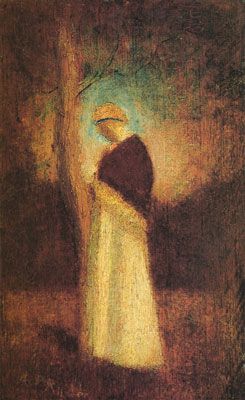
The Spirit of Autumn
A contemporary critic remarked about Ryder's early work that a shortfall in drawing skills was made up for by the overall effect of his "masses embodying a poetic impression". The figure in this very early painting is certainly an example. Like The Spirit of Spring from the same period, a circle of illumination accompanies a serene figure by a tree, but everything is softly defined, and the overall impression is of a contemplative mood rather anything more clearly delineated. This softness in the forms was a technique Ryder derived from some of the artists associated with the Barbizon school of French painters, but he was recognized as different from early on, another critic calling his work "dream-pictures." The artist's natural world may have been around his childhood home in New Bedford, Massachusetts, but in a painting like Spirit of Autumn the natural seems to be more dream-like than real, and the overall effect is delicate, restrained, and introspective.
Ryder in his twenties and early thirties, living in New York, was a shy and likeable man with an attitude to women that an acquaintance described as "chivalrous." He would never marry, and it is tempting to see in these early paintings an other-worldliness that seems celibate in its detachment; Ryder's figures less physical bodies than presences in a landscape of imagination. Ryder's Tonalism in the making, his use of color for atmospheric effect, was less the self-conscious adoption of a style shared with others than Ryder's own very personal interest in giving his restrained palette a life of its own, beyond its purely representational capacities. His cows and sheep from this early period are pulpy material presences of color in the landscape. So too, the figure here is an assemblage of color masses on the surface of the panel. What both intrigues and presages the achievements of his later, mature work, is the intense feeling of a presence in the image.
Oil on panel - Columbus Museum of Art, Columbus, Ohio
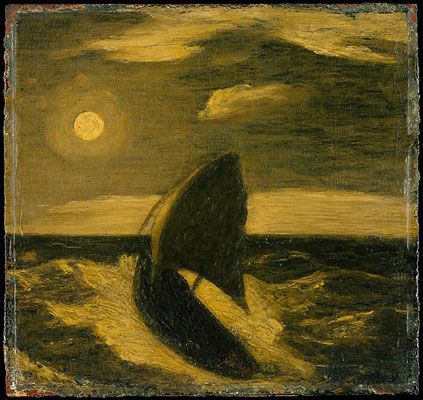
The Toilers of the Sea
This is a relatively small painting, about a foot (or 30cm) square. The size adds to its feeling of concentrated intensity. The painting shows Ryder's characteristically sure-handed compositional skill. Although the little boat is cresting a wave, the moment feels frozen in time because the strong compositional balance holds the pictorial forms so firmly in place: the shape of the boat and sail, the strong horizon line, the placement of the moon and clouds, the contours of the waves. Painted with layers of subtle color over a monochromatic base, the painting is moodily somber. The painting that we see today, however, is darker than in Ryder's day due to some deterioration of the pigments. So as we look at it, we should imagine a little more green than dull yellowness in the olive-greens and more punch to the moonlight. Ryder, who was not quite as reclusive as some accounts suggest, often spoke admiringly to his small circle of friends about his love of Jean-Baptiste-Camille Corot's paintings, leading to Ryder being associated with Corot's Tonalism, or the use of a muted range of colors. Many American artists were exposed to this technique when they visited Europe to study painting after the Civil War, so Ryder was not alone in being attracted to it. But his palette here is much more severe than Corot's, his application of it highly personal, his vigorous brushwork coarser, and his vision distinctive.
One journalistic commentator wrote about seeing "bushy-bearded" Ryder in a New York library lugging a pile of art books off to a quiet corner, including a book about J.M.W. Turner. There are certainly parallels between Turner's approach to the sea and Ryder's in this and his other "marines". Ryder's painting could almost be a small section cut from Turner's Fishermen upon a Lee-Shore, in Squally Weather, the fishing boat rising on the wave, the luminosity in the clouds beyond. However, Turner's waves are detailed and sweep towards us in a space that has perspectival depth where Ryder's have a more stylized bulk and loom across a flatter surface. One way of thinking about this is that Turner was an obsessive observer of the actual sea in all its moods while Ryder's sea is an inner vision of tumult and the search for respite. When the painting was exhibited in New York in 1884, Ryder wrote this for the catalogue: "Neath the shifting skies, O'er the billowy foam, The hardy fisher flies to his island home."
The painting's 1915 purchase by the Metropolitan Museum of Art secured Ryder's reputation and led directly to his growing popularity, while also attracting the attention of many forgers over the years.
Oil on wood - The Metropolitan Museum of Art, New York
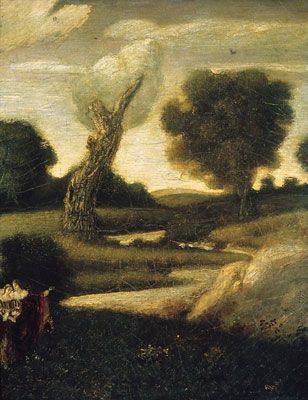
The Forest of Arden
In a 1905 interview for a magazine, Ryder talked about an early, formative moment in the development of his technique when he had felt lost in a "maze of detail" and threw his brushes aside, squeezed big chunks of paint onto the canvas, moulded them with a palette knife, and realized that he could sculpt vigorous forms onto the surface of his paintings. This painting shows off the resulting boldness and simplicity, applied to one of the several subjects Ryder took from what we would now call "high culture," in this instance a Shakespeare play. Two small figures from As You Like It appear in the bottom left corner, like the "donor portraits" that were sometimes included in paintings of the Middle Ages and Renaissance, small renderings of patrons or other significant persons the artist wished to acknowledge. So, Ryder acknowledges here the Shakespearean characters who gave him the inspiration for his landscape but the landscape itself is all Ryder; the dark, bulky forms of trees billowing like clouds into the glow of the sky, the perspective heaping the layers of the composition onto a space that feels materially dense behind the dwarfed couple. The space is compositionally anchored around the dead tree to the left of center. Probably painted from memory after visits to Bronx Park in New York, as Ryder was not a en plein air or outdoor painter, the dead tree has much more presence in the painting than the human figures.
The two figures and a similarly placed tree feature in Shakespearean Scene: As You Like It, painted by Francis Hayman around 1750. There is no firm evidence that Ryder knew this painting, but its depiction of Celia and Rosalind is strikingly similar and the tree is compositionally placed in the same way. Ryder's dead version of the tree introduces a discordant note into a scene that might have beenlight-hearted Shakespearean wistfulness; the tree's gnarled presence, reaching into a bulbous mass of cloud, suggesting something much bigger than the young women's worldly romantic preoccupations. Where Hayman staged his version with mannered theatricality, Ryder subsumes the players' concerns into a natural world that funnels compositionally towards a luminous distant hill beyond the forest. Ryder's drama, as always, is other-worldly.
Oil on canvas - The Metropolitan Museum of Art, New York
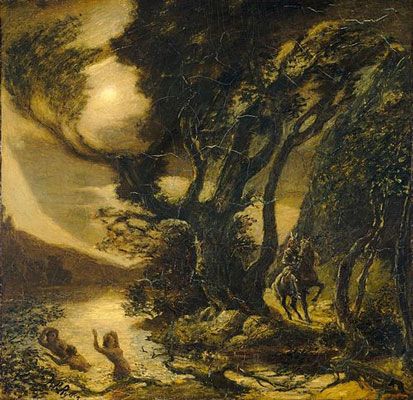
Siegfried and the Rhine Maidens
Ryder wrote to a buyer interested in his work, "Have you ever seen an inch worm crawl up a leaf or a twig, and then clinging to the very end, revolve in the air, feeling for something to reach something? That's like me. I am trying to find something out there beyond the place on which I have a footing." From his early thirties, Ryder turned to classical myth, literature, Biblical stories, and even opera as he stretched out "for something to reach something." It is as if the place where he had his footing was not enough and he needed imagery from somewhere else to furnish his continuing explorations. But the metaphor of the inch worm is modest too, even a little self-deprecating. Ryder was never one for self-aggrandizement and the operatic material evoked in this painting is not that kind of over-reaching on his part. In November 1887, Scribner's Magazine published an engraving of one of Josef Hoffmann's set designs for Bayreuth productions of Wagner's Der Ring des Nibelungen, and this painting is clearly influenced by it. The New York Metropolitan Opera was doing a lot of Wagner at the time, having switched its emphasis from Italian to German, and Ryder was in the audience for a performance of Götterdämmerung, the last in the Ring cycle. He wrote afterwards: "I had been to hear the opera and went home about twelve o'clock and began this picture. I worked for forty-eight hours without sleep or food, and the picture was the result."
So, we can imagine how excited Ryder's imagination must have been. Did he rummage around for a copy of Scribner's Magazine when he got home from the opera that night? And what was he reaching for as he worked in this frenzy of effort to lay down the basics of Siegfried and the Rhine Maidens in those forty-eight hours, after which he would have continued for months or years with his usual technique of patiently applying layers of paint to build up the density of effect he wanted? Ryder exactly reproduces the right-arm's posture from one of Hoffmann's three Rhine maidens, and her nakedness, whereas the maidens in the opera he had just seen would have been fully costumed. The pliancy of her body and the thrust of her breasts are much more pronounced than in Hoffmann's rather wooden pose. She is backlit sharply by the moonlight, her two companions in shadow, and the mounted figure of Siegfried looks taken aback by her. The limbs of the large tree in the center precisely echo the woman's posture but lean towards Siegfried, as if threatening to embrace him, a wild energy exploding into the night sky in the form of billowing foliage.
The Rhine maidens are begging Siegfried to return the magic ring and escape its curse. In the opera he ignores them and continues on his way to disaster. In Ryder's magnificent painting, however, the moment is arrested. Ryder puts Siegfried on horseback so that the painter can capture a feeling of rearing alarm. This is as much a reaction to the exploding elemental forces that the Rhine maidens represent as to the figures themselves; elemental forces that Ryder's characteristic vortex of moonlit clouds and natural forms expresses so vigorously here. The inch worm clinging to his footing, while stretching out for something else, may have found more than he was expecting that night at the opera.
Oil on canvas - The National Gallery of Art, Washington DC
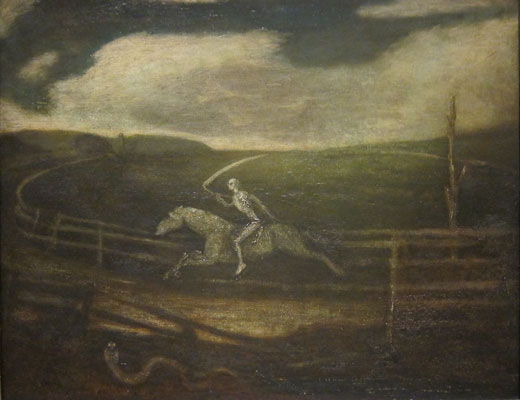
The Race Track (Death on a Pale Horse)
A horse called Hanover was racing in New York's Brooklyn Handicap on May 15, 1888, the day that one of the waiters at the Hotel Albert shot himself. The hotel was run by Ryder's brother. The waiter, whom Ryder knew, had bet all his savings on Hanover and lost everything when the horse came in second. Ryder heard about the tragedy the next morning when breakfasting at the hotel. It had rained the day of the race and the course was muddy, which probably affected the outcome. It is important, therefore, that we resist the temptation to read this painting solely in terms of archetypal symbolism. The pale horse, the skeletal and scythe-wielding figure of death, the snake lurking by the broken fence in the foreground, express Ryder's own feelings about his acquaintance's fate just as much as they symbolize something more abstract or general.
The paint has been laid on more thinly than is usual for Ryder, and the green grass beyond the muddy racecourse, though darkened by the picture's deterioration, has hints of vibrancy and seems to reflect the light flooding down from under the ugly clouds. The sudden reverse in the suicide's hopefulness is rendered in macabre imagery but there is something oddly balanced and unfrightening about the painting too, because this Grim Reaper will circle endlessly around the oval of racetrack as if on a carousel. Ryder worked on the painting, on and off, for several years. The end result feels gloomily resigned rather than fearful. The inevitability of death's coming round, again and again, is acknowledged here, even if the snake is telling us it may strike suddenly, and the gloom is even lightened somewhat by Ryder's characteristic luminosity. He sold the painting to a close friend, a medical doctor, and we might wonder if Dr. Sanden saw it through a physician's resignation to mortality.
Horatio Walker, an artist friend of Ryder's, may have been employed to "touch up" the original by the gallery owner who bought the painting from Sanden after Ryder's death. So, we have to be careful in this instance not to assume that we are seeing the painting precisely as Ryder intended. His hallmark touches are unmistakeable though, especially the dead tree linking ground and sky, and the formal symmetries, such as the way that the clouds echo the form of the leaping horse, and of course the strange light. In Ryder's world, the unearthly always takes material form in these effects of the paint and in the compositional relationships among the things painted.
Oil on canvas - Cleveland Museum of Art
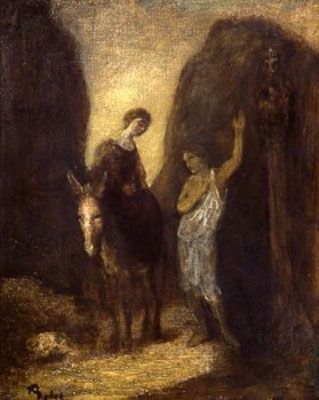
The way of the cross
When Ryder paints Christian subjects, his figures are typically much larger than in his other works, where nature tends to dwarf the human element. The people here, Mary and Joseph, are the large centers of the composition, the lines of rock formation and the channelled light flowing through them in swathes of paint, their bodies undulating with the compositional flow. If they are on their way to Bethlehem, as the Bible story tells us, the journey is an allegorical one, since Joseph gestures to a small cross on a roadside wooden post, prefiguring the crucifixion of Mary's unborn child.
Ryder was sometimes viewed by succeeding American painters as prophetically linking tradition to Modernism, and this painting feels saturated with both traditional religious sentiment and a Modernist interest in abstraction. Half-close your eyes as you look at it, letting the detail dissolve, and it becomes a striking juxtaposition of light and dark, an almost chalice-like rendering of luminosity. Re-focus and, as the detail resolves once more, Joseph's gesture towards the extraordinarily small cross on the dark ground takes on a powerful poignancy. In this way, the painting tells us a great deal about Ryder's interest in what we might see by looking into his paintings deeply enough. When visitors came to his studio he would pull out paintings from where they were piled haphazardly and clean them with a wet cloth to bring out their depth. The tonal layers over a largely monochromatic underbody create this sense of a surface to be peered into for illumination. His colors are never clean and always feel like there is something beyond them, the presence of that strange light saturating everything.
This painting needs to be seen alongside Ryder's Christ Appearing to Mary (mid 1880s), a depiction of Mary Magdalen's visitation by the crucified Jesus just prior to his Ascension to Heaven. A key point of emphasis in the biblical account is that Mary was not to touch Jesus, and Ryder's Christ has just gestured her to her knees, restraining her impulse to embrace him. The empty space between them vibrates with a resulting tension. Return to The way of the cross and the space between Joseph and the other Mary feels just as tense, her pregnancy no longer worldly, Joseph's gesture almost sad in its acknowledgment that his young wife is no longer his alone.
Oil on canvas - Addison Gallery of American Art, MA, United States
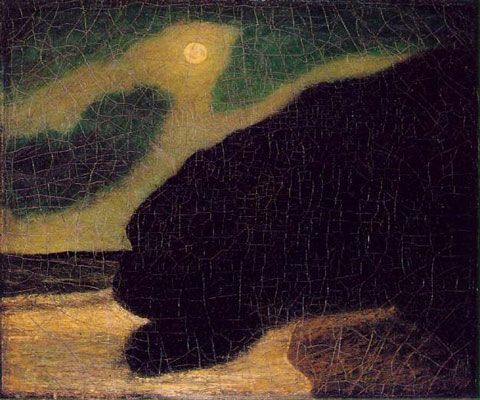
Moonlit Cove
This painting is one of Ryder's most successful deployments of large two-dimensional forms on the surface that only reveal their layers of depth on closer examination. The sheltering boat here is almost obscured by the moon shadow of the promontory, the boat's shape and that of its own shadow extending the bulk of the land form down onto the reflective shallows by the sheltered beach where it is anchored. The painting is one of Ryder's most abstract, until closer observation draws us past its compositionally powerful surface and we appreciate the represented scene more fully. The positive and negative shapes of the formal composition do not surrender the canvas to merely pictorial meaning, however, and the abstract effect remans powerfully present.
Ryder's moon both illuminates and obscures through the shadows it casts. As paint, his moonlight seeps tangibly across the surface, a possibly unintended effect of Ryder's underlayer not having dried fully when he began overpainting it with thinner layers according to his habitual technique. So, the painting oscillates intriguingly between depiction and surface. When it was included in the 1913 International Exhibition of Modern Art at the "Armory" on Lexington Avenue in New York, the "show that shocked America" in the hyperbole of some art histories, it quickly took on iconic stature for American modernists.
Yet again, though, an early "restorer" is suspected of overdoing things, adding a bluer glaze to Ryder's mostly gray sky, according to someone who had seen Ryder's original before it was sold. No amount of tinkering, however, can affect Ryder's fundamental achievement here. Even amidst the some 1,300 paintings at the Armory Show, among them the greats of European modern art, it must have stood out for its singular vision, for which the various "isms" seem largely irrelevant. If this painting can be thought of in terms of Romanticism, it is only because Ryder's own temperament drew him so inexorably beyond rationality and towards a way of feeling about the world that found sublimity in paint and elemental forces that seemed to pull at him; his own anchorage in a simple life not harbouring him from their radiant presence.
Oil on canvas - The Phillips Collection, Washington
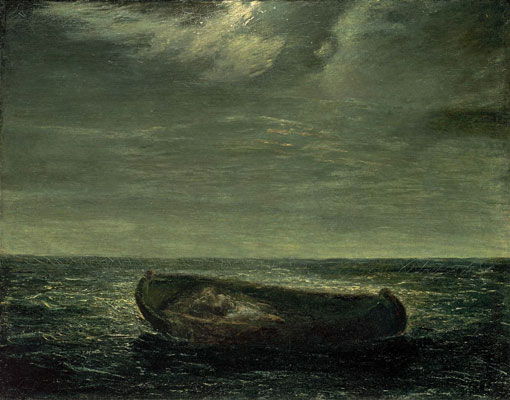
Constance
Here is another of Ryder's little boats, a protective womb-like seed-pod carried by the sea, this one protecting Constance and her child, cast adrift by a jealous mother-in-law after Constance weds the mythical king of Northumberland in England and converts the pagan to Christianity, in one of Geoffrey Chaucer's tales from the late 14th century. Adrift without sail or oars, the mother and child eventually run aground in Spain, are taken back to Rome from where Constance was originally exiled, and are finally reunited with the child's heartbroken father who has gone to Rome on a pilgrimage. But of course, as always with Ryder, this is no mere illustration of a story.
Ryder's layers of colored glazing were painstakingly worked and re-worked in search of what Ryder himself, in reference to this painting, called "the tone." Tone for Ryder, was not just Tonalism's limited palette and soft effects, but an interplay between deep blue-green glazes and accented moonlight on water and clouds, creating an impression of depth that was less perspectival than visceral. A buyer was kept waiting while Ryder "scraped it out" and re-worked the painting until he was satisfied. What he achieved, on a 3-foot wide canvas in a rare phase of working at a larger scale, was part of a concerted period of effort by Ryder to produce his definitive artistic statements, and he succeeds here by placing woman and child in a delicate aureole of moonlight that counterbalances Constance's expression of despair. The child lies clutched as if still in her womb, Constance lies in the womb of the boat, the boat lies in a womb of moonlight, as if the body of the world carries hope even when confronted by the most lost of human souls.
So, here we glimpse Ryder's intimately held belief, and perhaps what he often thought of on his pensive late evening walks up 8th Avenue in New York, where moonlight competed with gaslight, before going home to his apartment studio to paint some more: that he painted better away from nature because his inner world was a place of which he could write "in the loneliness around is a strange joy found." Only in his paintings could that strange joy materialize for Ryder to share with us.
Oil on canvas - Museum of Fine Arts, Boston
Biography of Albert Pinkham Ryder
Childhood
Albert Pinkham Ryder was born in 1847 in New Bedford, a growing port in Massachusetts then known for its role in the whaling industry. Both his parental ancestors were of old Cape Cod families, and it is presumed that many in the family had been sailors. Albert, the youngest of four sons, began attending a public grammar school for boys, but had to quit due to poor eyesight resulting from a vaccination that went wrong. This visual impairment was never completely healed, and Ryder may have perceived colors and depth in a slightly altered way, contributing to his distinctive style.
It was during this time that he began to paint outdoors, mainly inspired by the sea and the countryside that surrounded him. His interest in the sea as a subject would develop further and in a unique way. Ryder later remarked that when his father gave him paint and brushes and he stood in front of an easel for the first time it was a kind of revelation for him. None of these early paintings survives to show us how that revelation manifested itself, but it was more about the possibilities that young Albert sensed than about what he achieved at the time.
Education and Early Training
When Albert was in his early twenties, the family moved to New York City, where his older brother was already managing the Hotel Albert. Ryder applied to the National Academy of Design but his application got rejected. Either following advice from the Academy or on his own initiative, he then began lessons with the painter William Edgar Marshall, a former pupil of Thomas Couture in Paris. After this period of training, his application was accepted, and Ryder began his studies at the Academy in 1870. It was there, in 1873, that he met the artist Julian Alden Weir, who would become his lifelong friend. That same year he exhibited his work in the Academy for the first time.
In 1875, Ryder participated in an exhibition with John La Farge and William Morris Hunt (both ex-pupils of Couture) who, after having their work rejected several times for exhibition by the National Academy, had decided to set up on their own. The exhibition was sponsored by the English interior design firm Cottier & Company and Daniel Cottier, one of the owners, quickly became Ryder's friend and dealer.
In 1877, Ryder made his first trip to Europe. There he studied the paintings of the French Barbizon School and visited the Netherlands where he became familiar with the Dutch Hague School, whose use of somber colors appealed to Ryder.
On his return, Ryder became a founding member of the Society of American Artists, a group that felt the National Academy was too conservative and academic for their interests. Other members of the group included Julian Alden Weir, Augustus Saint-Gaudens, Robert Swain Gifford, and John La Farge, all of whom are now considered to have been among the most progressive American artists of the time. Ryder maintained a close relationship with the group, exhibiting with them from 1878 to 1887.
Mature Period
In the early 1880s, Ryder came to know the Symbolist painter Robert Loftin Newman, a Tennessee-born ex-Confederate soldier who studied briefly under Couture in France and is thought to have influenced Ryder's shift from the Barbizon style of pastoral landscapes towards subjects based on folklore, literature, and opera. Ryder's studio, which Newman may have briefly shared, was located at the Benedick Building on Washington Square East, a recently opened apartment block intended for single men and named after Benedick, the confirmed bachelor in Shakespeare's Much Ado About Nothing. A building janitor and basic maid service offered amenities including breakfast. The Benedick suited Ryder's prioritizing of painting over practicalities and he settled in there for a decade. A trip to North Africa with Daniel Cottier and sculptor Olin Levi Warner during the summer of 1882 was by far the most ambitious of his infrequent forays away from the Benedick.
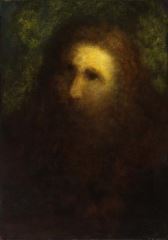
Ryder never married, and there is no evidence of his having been involved in any significant romantic relationships with women. Nor did he seem to care much for worldly affairs, money, or for his own artistic reputation. He is celebrated for claiming that, "The artist needs but a roof, a crust of bread and his easel, and all the rest God gives him in abundance. He must live to paint and not paint to live."
Despite asserting that "catching mice is more my line than fishing," referring to his preference for city apartment life, Ryder visited Weir's farm a few times. He found it inspiring, writing in 1897 that "the landscape and air are full of promise." By then Ryder had left the Benedick and was living in a dingy tenement building on West 15th Street in New York from which an escape to the farm may have been occasionally welcome.
Late Period
After 1900 and the death of his father, Ryder stopped creating new works. Instead he spent most of his time re-working old paintings that were stacked in his rooms. These paintings, due to his eccentric technique that had little regard for drying times of oils and varnishes, had cracked or darkened over time, and Ryder tried to restore them to their original condition, in most cases quite unsuccessfully.
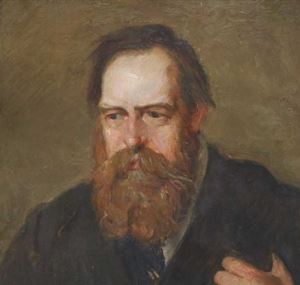
During this time Ryder did become more reclusive. He had a disregard for personal and domestic cleanliness and the few visitors he had were left shocked by the condition of his apartment. He remained, nonetheless, a genial if shy host and took pleasure in telling stories about his work. Although Ryder himself had largely lost interest in exhibiting his work, public and critical interest in his paintings greatly expanded during this period, and they were increasingly sought out by collectors. In 1902 he was elected to membership of the National Academy of Design, for which Weir painted his portrait.
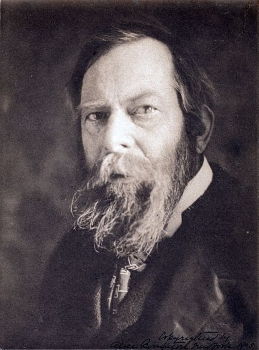
In 1904, Ryder wrote a letter to Weir wishing "that your fish will thrive ... your work will answer, your farms too, your haystacks grow, and rocks disappear, and everything be as you wish." In a way, this blessing seems like a gesture of farewell to his friend. Not much else is known of Ryder's final decade, but he was recognized by inclusion in the now famous Armory Show in 1913 which the then frail Ryder went to see on the arm of a friend.
Soon after that he was taken in by Charlie Fitzpatrick, a burly and unsophisticated ex-sailor, and his wife Louise, an amateur painter, who had been Ryder's neighbors on West 15th Street. Louise was Ryder's only student and she both adored and venerated him. The Fitzpatricks took Ryder to their new home on Long Island from where Louise reportedly kept his old friends away until his death. His 1917 obituary in the New York Times said that Ryder "was one of the most interesting artists America has ever produced" and that "every picture that he painted was the result of years of reflection and experiment." Seventy years later, a critic writing in the New York Times could justifiably say that Ryder's paintings "form part of a collective American folk-memory."
The Legacy of Albert Pinkham Ryder
A year after his death, the Metropolitan Museum of Art in New York staged a memorial exhibition in his honor, by which time artist Walt Kuhn could claim that there was "only Ryder in American painting" - a statement that sounded credible to many, at least in the influential Manhattan art world. Art critic Robert Hughes has said that this elevation of Ryder "had something messianic and hopeful about it," as if Ryder embodied a vision of American art's ambitions to be different, special, and profound.
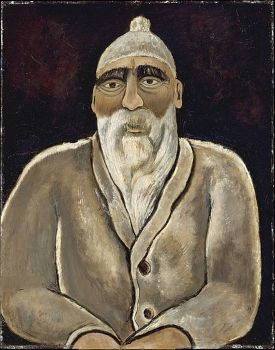
Ryder influenced many painters of the time. Kenneth Hayes Miller, a Symbolist, considered Ryder to be a father figure and took care of him in his old age, until the Fitzpatricks took him in. Although Ryder never taught (except the devoted Louise Fitzpatrick), he had a lasting effect on a younger generation of painters of his time, especially Arthur B. Davies, Marsden Hartley, Rockwell Kent, and Walt Kuhn. Hartley wrote that seeing Ryder's paintings "shook the rafters of my being." Later, Georgia O'Keeffe, Winslow Homer, Jackson Pollock, and Mark Rothko all greatly admired Ryder's work, especially his unique use of color. In fact, Pollock said that, "The only American master who interests me is Ryder." Critic Robert Hughes adds that these American artists looked up to Ryder "as an emblem of aesthetic purity, a holy sage, and the native prophet who linked tradition to modernism."
Although he did not think of himself as contributing to any movements, Ryder's daring simplicity of form and painstaking intensity of focus added a new psychological vigor to American Romanticism and a new profundity to Tonalism, and he delivered to modernism as it developed in America a reminder that form without vision can lack soul.
Influences and Connections

- Julian Alden Weir
- Daniel Cottier
-
![The Barbizon School]() The Barbizon School
The Barbizon School -
![Romanticism]() Romanticism
Romanticism - Dutch Hague School
-
![Marsden Hartley]() Marsden Hartley
Marsden Hartley -
![Jackson Pollock]() Jackson Pollock
Jackson Pollock -
![Rockwell Kent]() Rockwell Kent
Rockwell Kent ![Arthur B. Davies]() Arthur B. Davies
Arthur B. Davies- Ralph Blakelock
- Kenneth Hayes Miller
Useful Resources on Albert Pinkham Ryder
- Albert Pinkham Ryder: Painter of DreamsOur PickBy William Innes Homer and Lloyd Goodrich
- Albert Pinkham RyderOur PickBy Elizabeth Broun
- American Symbolist Art: Nineteenth-Century Poets in Paint Washington Allston, John LA Farge, William Rimmer, George Inness, and Albert Pinkham RyderBy Dianne Johnson
- Albert P. RyderBy Lloyd Goodrich / 1959
